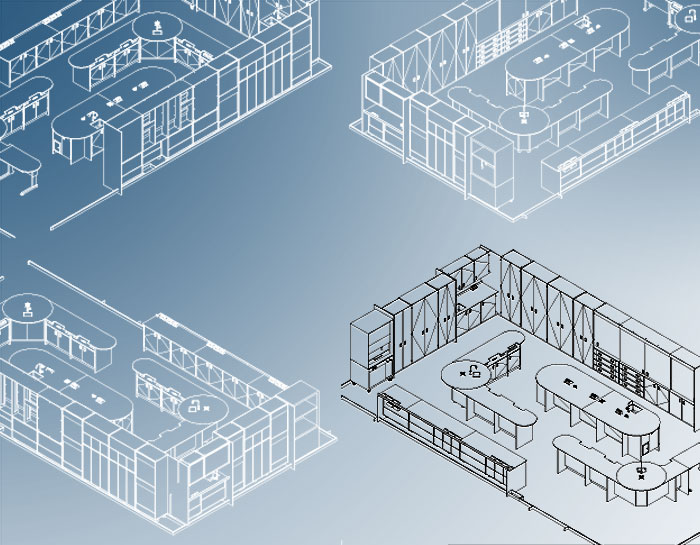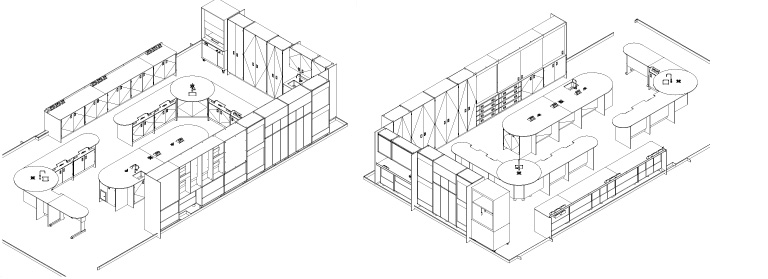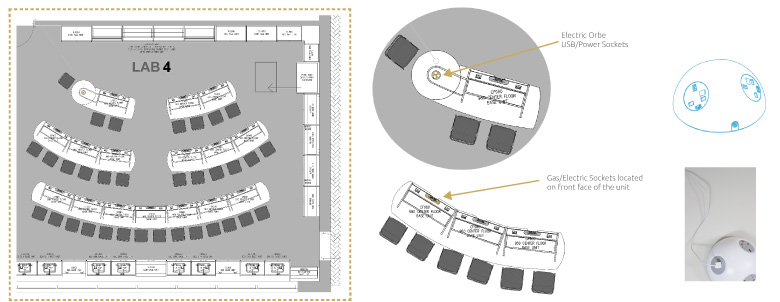Interview with a Designer | Ian Hewitt
What does it take to plan classroom spaces that inspire learning and encourage engagement between teachers and pupils?
We speak to Ian Hewitt, a designer at Innova Design Group, to get an insight into how cutting edge design is transforming education.
As a designer at Innova Design Group, I’ve seen firsthand how cutting-edge design is transforming education by creating flexible, tech-integrated, and sustainable learning spaces. Traditional classrooms are evolving into adaptable environments that support different teaching styles and activities. Modular furniture and mobile workstations allow for easy reconfiguration, promoting active learning and collaboration. Advanced technology, such as interactive screens and VR, is seamlessly integrated, while ensuring connectivity and access to digital tools.
This holistic approach is reshaping education for the modern learner.
Q: When you look at the very latest different
|
 |
A: Where rows of wooden desks once dominated rigid, badly lit rooms and students craned their necks for a view of dusty illegible chalk boards – state-of-the-art LCD screens, sleek hideaway white boards, subtle storage and intelligent, flowing layouts signify a new generation of education that I certainly never saw as a student.
Far from the classroom I experienced, the classroom of today is multi-functional, engaging and unafraid of technology to aid learning.
"As a designer, the ultimate goal is to create a better, more effective learning environment that holds attention and gives teachers a platform to engage."
This is done by ensuring classrooms give teachers and pupil’s permanent visibility of one another, creating spaces that adapt for individual and group learning exercises and encouraging interactivity in order to make use of some of the fantastic modern resources that are available to teachers.
It is amazing how far modern classrooms have come and it’s a pleasure to be a part of a genuine movement that is helping to improve learning.
Q. How did you get into designing school interiors?
A: Despite the fact that it only feels like yesterday that I donned my cap and gown, I left Liverpool Hope University with a Bachelor of Design 18 years ago having studied a product design degree course.
Starting out predominantly designing kitchens, I also spent 6 months as a design engineer for an indoor play company which was fantastic experience as it offered full creative license to design engaging spaces for youngsters.
This transitioned me neatly into the education and commercial interiors sector where I joined Innova 8 months ago.
Q. What does an average day at work entail?
A:The brilliant thing about my job is that no two days are ever the same. From libraries to school science labs, design technology and food tech rooms – all of the projects I’m involved with are interesting and varied.
And the scope of my job is equally varied. I am involved in every aspect of the process from the initial design concepts, production and manufacture to polishing and honing the final layout.
Q. How do you approach a school design brief?
"We work in accordance with the latest building regulations, health and safety legislation and design trends, to develop classrooms that are inspiring, cost effective and highly functional."
A: Every school, department, teacher and pupil is different, which means every brief has its own very specific set of requirements.
Once the project manager has explored requirements, needs and equally importantly – wants of the brief with the client – we use this information as a framework to build upon.
I always aim to work to create a space that exceeds expectations.
Q. How much room is there for creative manoeuvre?
A: It tends to vary from project to project. Some classroom designs have a long list of technical specifications to meet while other briefs are very open.
Clients approach companies like Innova expecting a room to be transformed into a new and exciting space, whether it’s a new build or refurbishment, fully turnkey or furniture only.
So creativity is evident in all design work to lesser or greater extent. Everything from the consultation, to the design, manufacture and install involves creativity and freedom for design solutions.
Q: What challenges and hurdles do you regularly encounter?
A: All rooms have a finite area, making best use of space one of the biggest recurring issues.
Personally, I am proud to say that the sector is rising to meet the challenge of this lack of space which is increasingly coupled with a growing class sizes.
Responding to these challenges creatively is genuinely driving innovation in the sector as designers find ever more intelligent ways of maintaining flows.
As you might imagine, health and safety is also a hurdle. Finding creative solutions to meet requirements is also raising the bar of excellence in classroom design.
Q: How do you think designers can best help clients achieve the brief?
A: Designers need to bear in mind that aesthetic is only part of the job. Important yes, but critical – no. Form, in the context of classroom design, must go hand-in-hand with function.
As practical spaces, there is a need to create a space which is not only aesthetically appealing, but is also practical for teaching and learning as well as being durable in a demanding environment.
I always design the space and provide plans, elevations and 3D visuals to the client to help them visualise the space prior to commitment and manufacture. That way they can make changes and adjustments to the design.
If I create a room that operates effectively, meets the client’s needs and looks great then I feel I’ve done a good job.
Q: What in your opinion is the biggest recent development in classroom design?
A: The biggest influence in classroom design is the integration of technology into the classroom environment.
Children nowadays grow up with a dummy in one hand and touch tablet in the other. The challenge for designers (and indeed adults) is to try to keep up with it and harness it to improve learning.
Virtual reality is the next big thing! I’d be interested to see how long it takes for VR and augmented reality to become common place in the classroom – but believe me – it will happen!




